Abstract
Since social scientists rarely have access to experimental data, they rely heavily upon observational studies. As a consequence, their attempts to make causal inferences about the effects of social factors--such as occupation or marital status--on health are plagued by potential selection problems. Some researchers have addressed this selection-causation problem on the basis of the presence or absence of a particular aggregate pattern of health status. The rationale underlying this approach derives from the investigators' hypotheses that the presence of selection would lead to a particular type of pattern that is distinct from the pattern that would result in the absence of selection. Although intuitively appealing, this strategy appears to be seriously flawed. The essential weakness is that the range of patterns that can result from selection is often much broader than researchers have speculated.
Full text
PDF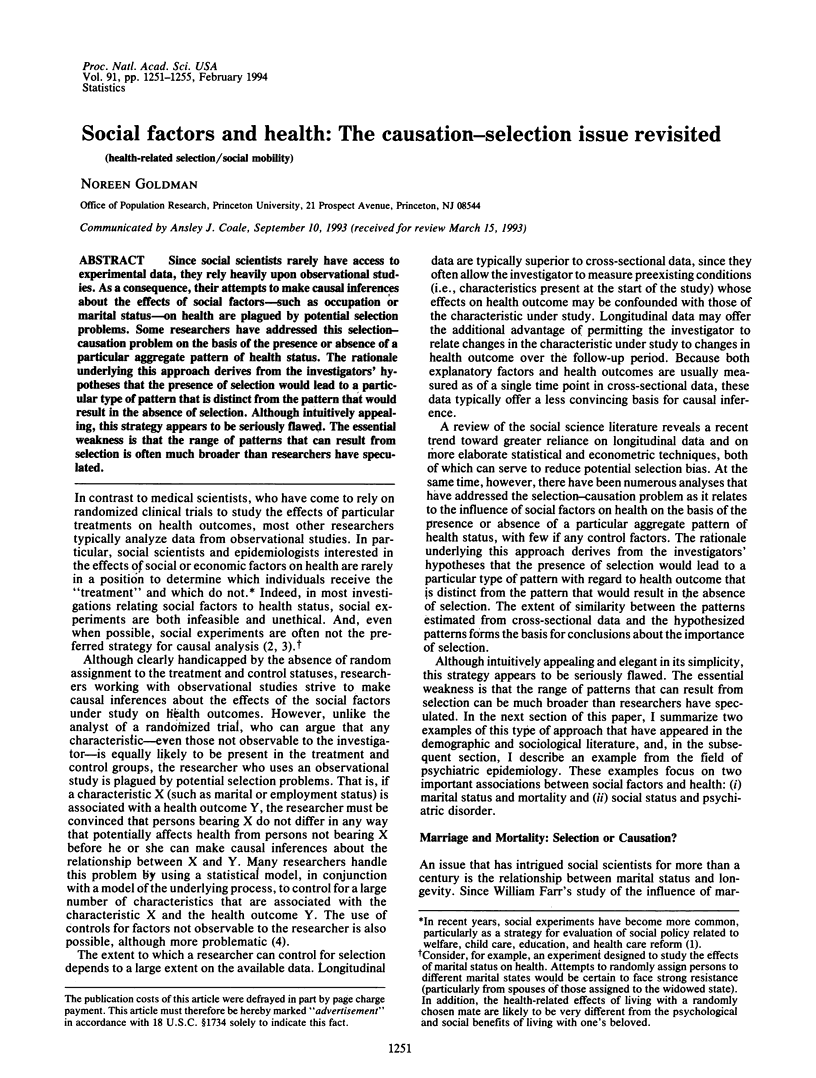
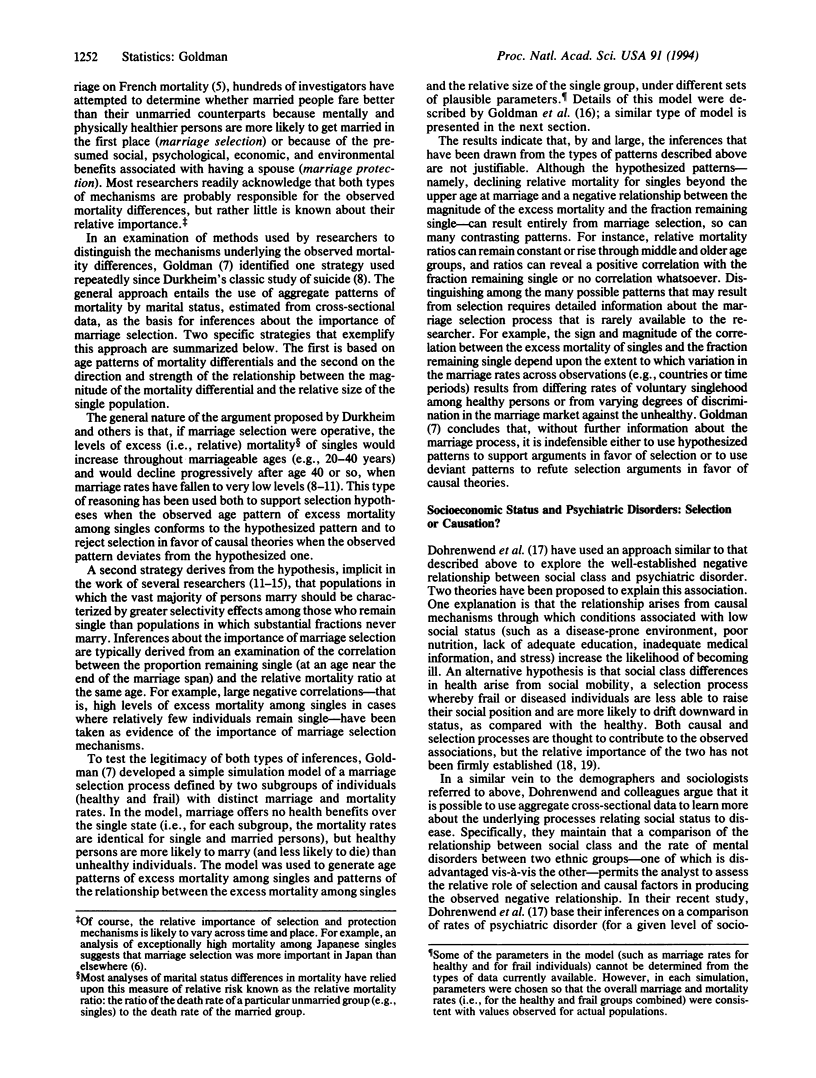
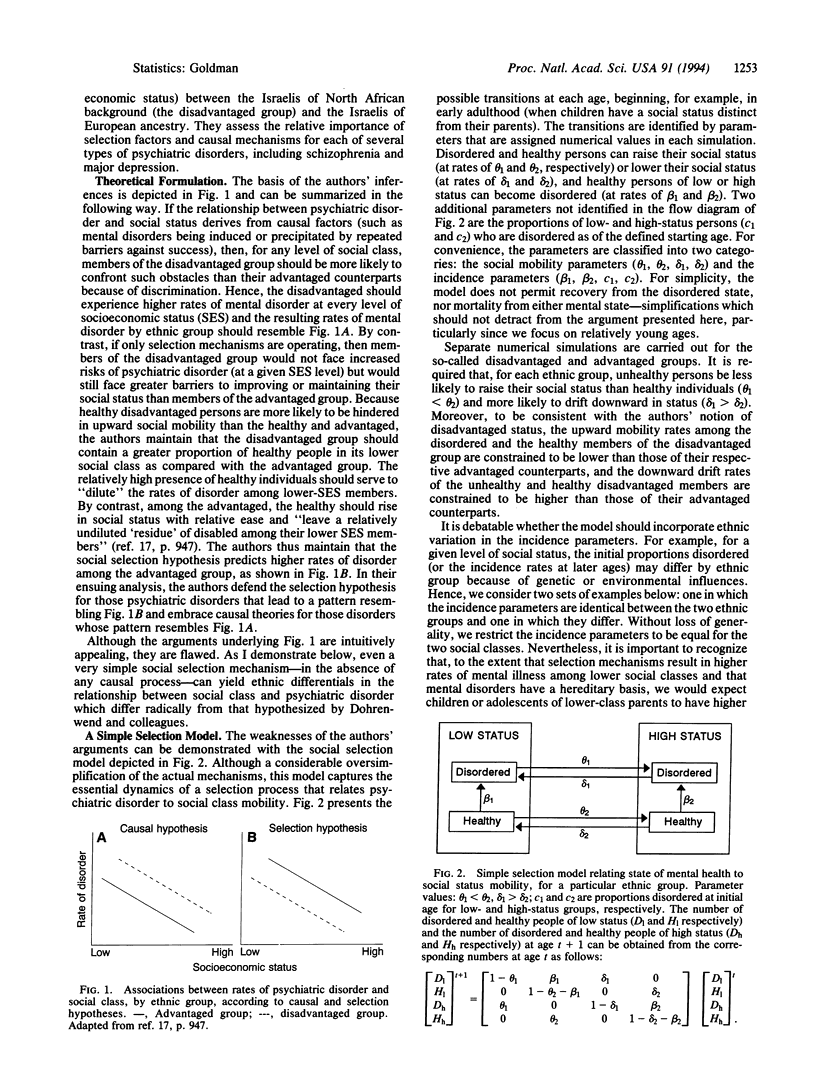
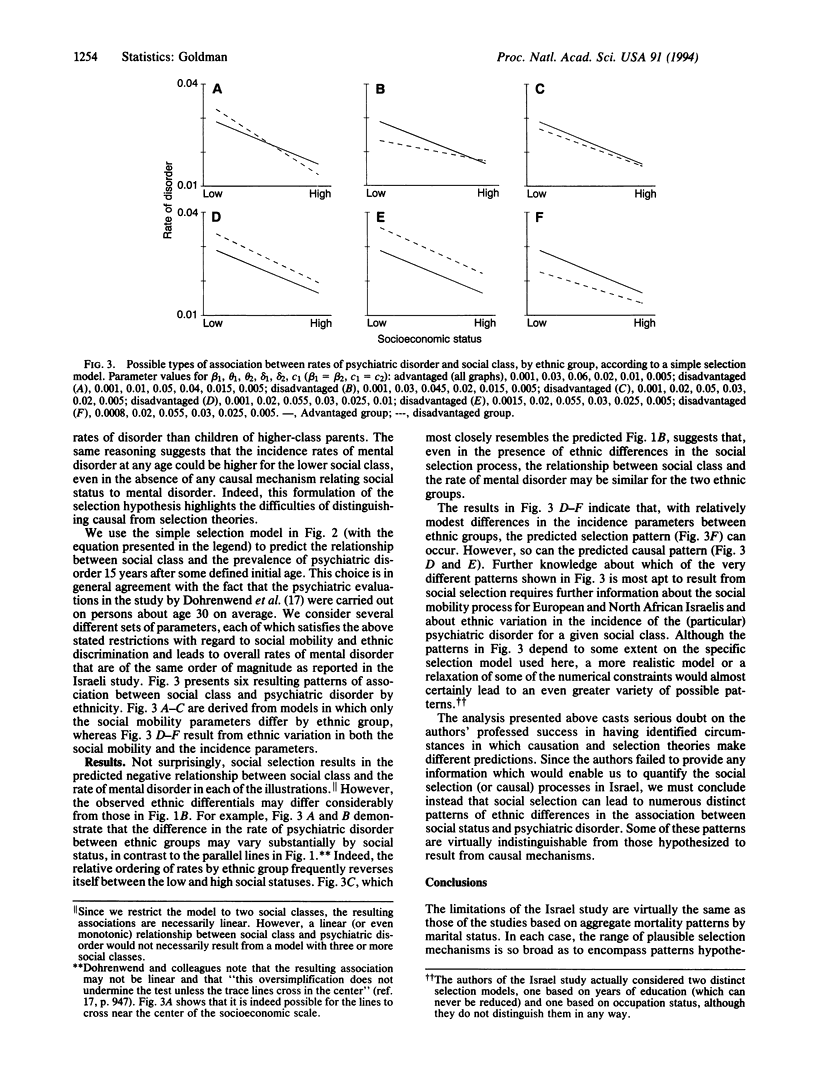
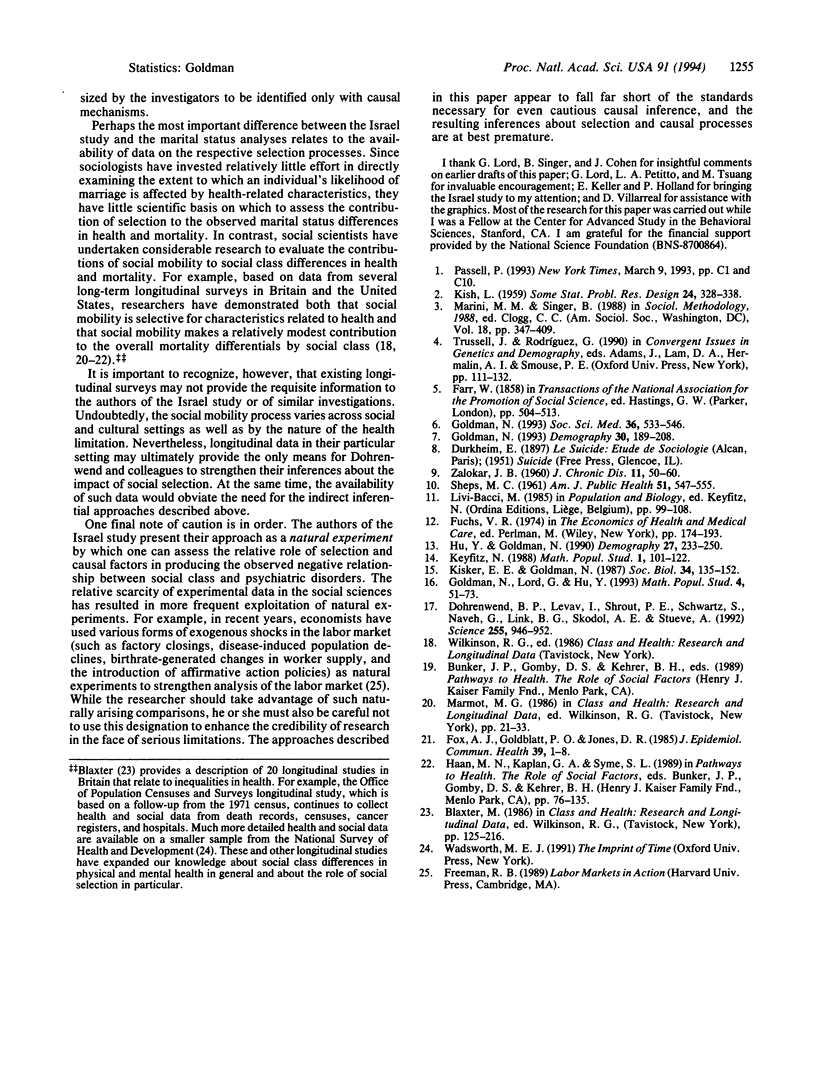
Selected References
These references are in PubMed. This may not be the complete list of references from this article.
- Dohrenwend B. P., Levav I., Shrout P. E., Schwartz S., Naveh G., Link B. G., Skodol A. E., Stueve A. Socioeconomic status and psychiatric disorders: the causation-selection issue. Science. 1992 Feb 21;255(5047):946–952. doi: 10.1126/science.1546291. [DOI] [PubMed] [Google Scholar]
- Fox A. J., Goldblatt P. O., Jones D. R. Social class mortality differentials: artefact, selection or life circumstances? J Epidemiol Community Health. 1985 Mar;39(1):1–8. doi: 10.1136/jech.39.1.1. [DOI] [PMC free article] [PubMed] [Google Scholar]
- Goldman N., Hu Y. Excess mortality among the unmarried: a case study of Japan. Soc Sci Med. 1993 Feb;36(4):533–546. doi: 10.1016/0277-9536(93)90414-y. [DOI] [PubMed] [Google Scholar]
- Goldman N., Lord G., Hu Y. Marriage selection and age patterns of mortality: a mathematical investigation. Math Popul Stud. 1993;4(1):51–73. doi: 10.1080/08898489309525356. [DOI] [PubMed] [Google Scholar]
- Goldman N. Marriage selection and mortality patterns: inferences and fallacies. Demography. 1993 May;30(2):189–208. [PubMed] [Google Scholar]
- Hu Y. R., Goldman N. Mortality differentials by marital status: an international comparison. Demography. 1990 May;27(2):233–250. [PubMed] [Google Scholar]
- Keyfitz N. A Markov chain for calculating the durability of marriage. Math Popul Stud. 1988;1(1):101-21, 124. doi: 10.1080/08898488809525262. [DOI] [PubMed] [Google Scholar]
- Kisker E. E., Goldman N. Perils of single life and benefits of marriage. Soc Biol. 1987 Fall-Winter;34(3-4):135–152. doi: 10.1080/19485565.1987.9988671. [DOI] [PubMed] [Google Scholar]
- Sheps M. C. Marriage and Mortality. Am J Public Health Nations Health. 1961 Apr;51(4):547–555. doi: 10.2105/ajph.51.4.547. [DOI] [PMC free article] [PubMed] [Google Scholar]
- ZALOKAR J. B. Marital status and major causes of death in women. J Chronic Dis. 1960 Jan;11:50–60. doi: 10.1016/0021-9681(60)90139-9. [DOI] [PubMed] [Google Scholar]


